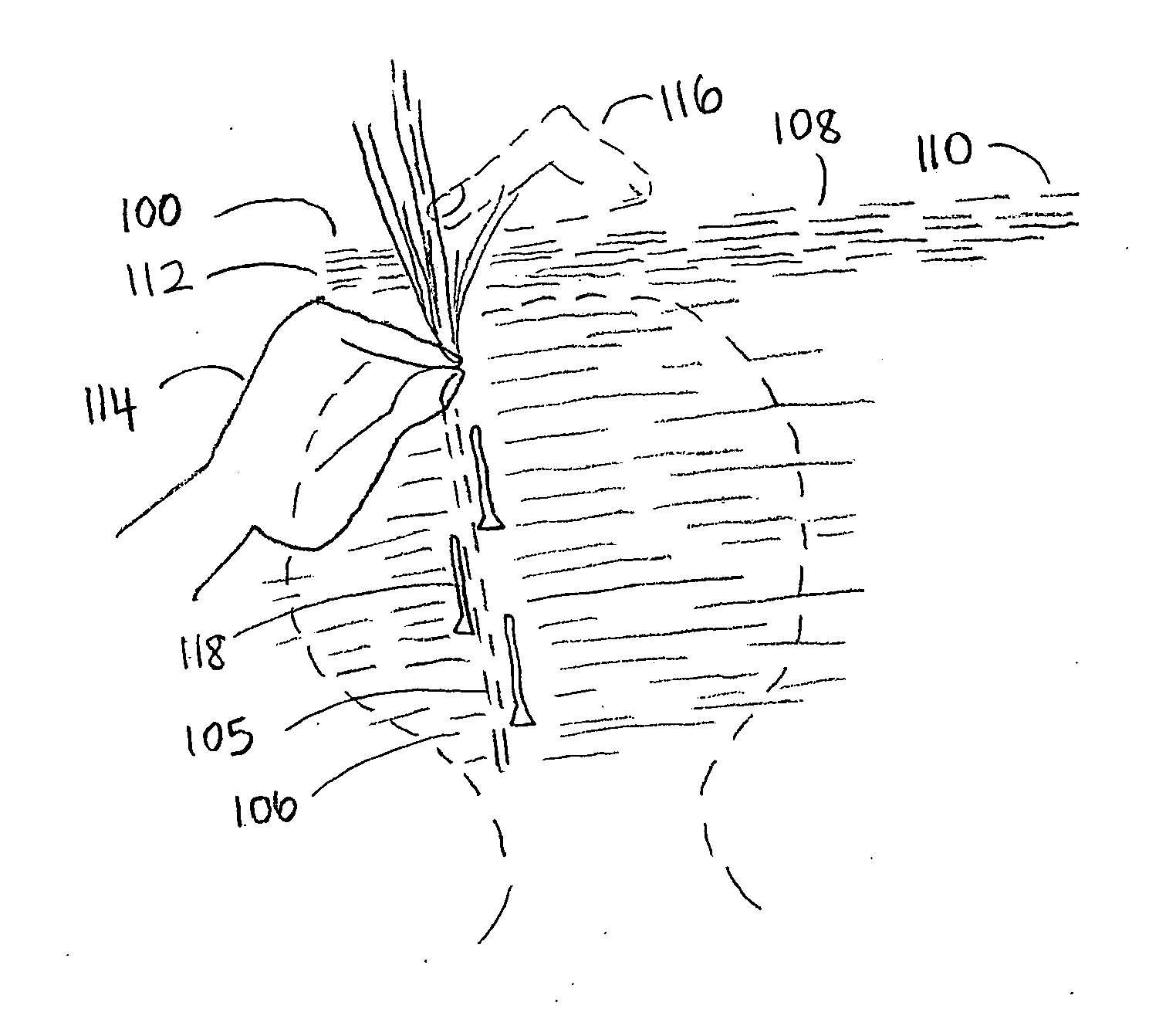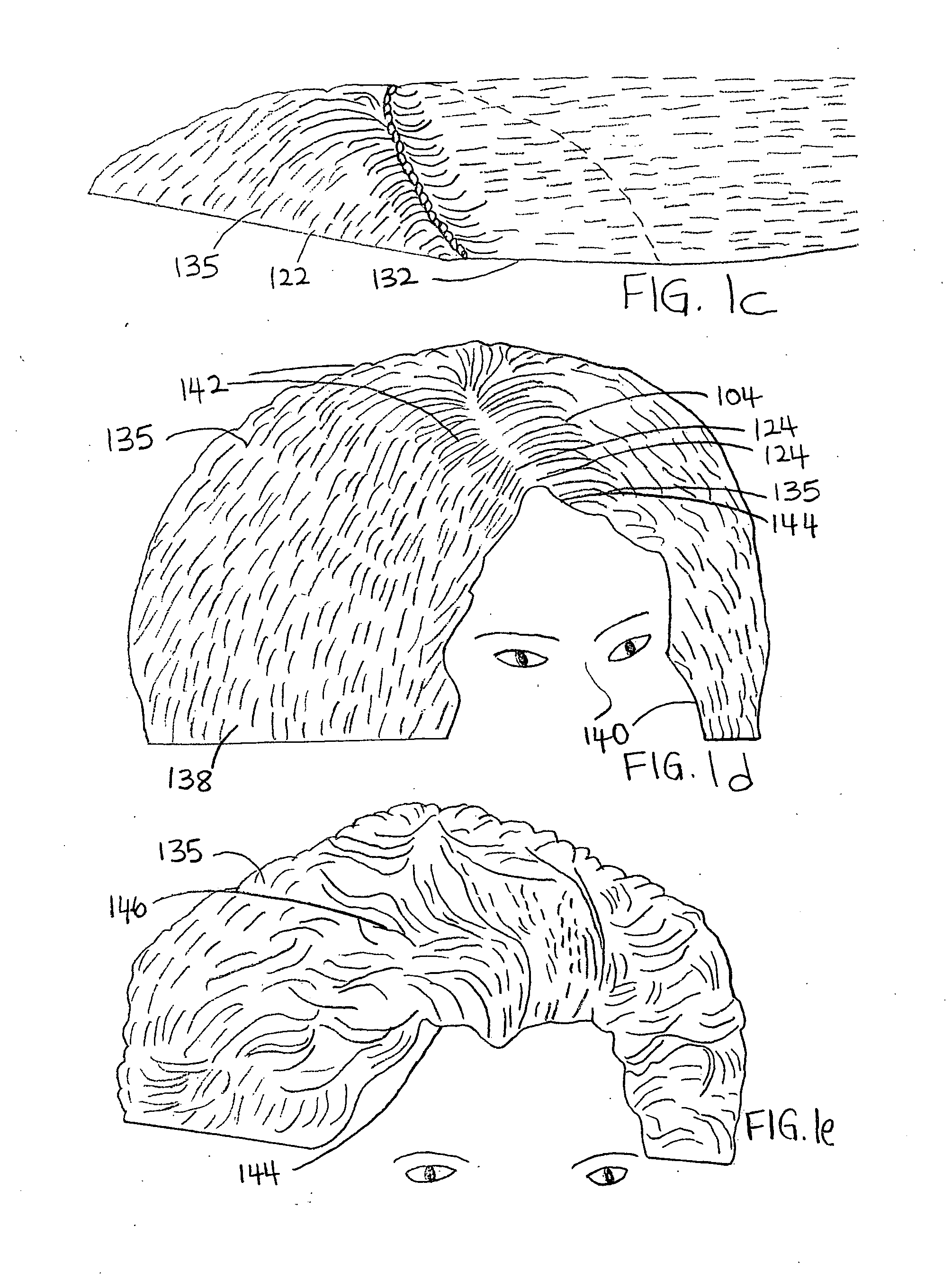Nosho hair extensions and kit
a technology of hair extensions and hair clips, applied in the field of hair extensions, can solve the problems of less natural sewing methods, more time-consuming installation of sewing methods, and harmful glue used with weft and strand methods
- Summary
- Abstract
- Description
- Claims
- Application Information
AI Technical Summary
Problems solved by technology
Method used
Image
Examples
first embodiment
[0057]The wefted hair extensions 132 are flipped over 134 to their non braided side 135. These embodiments are easily removed by the wearer, merely by unraveling the distal end 126 of the braid. Approximately 30 minutes time lapses for take down. There is no accidental cutting of native hair 106 as occurs with sewing methods, and no harmful results as occurs with glues, and small fasteners.
[0058]Various methods of securing and removing the present NoSho wefted hair extensions 132 to and from the native hair 106 of the wearer are also disclosed herein. These methods all include the steps for creating custom wefted hair extensions 132 without any tools. Essentially, these embodiments are an alternative to commercially sold weft extensions. These embodiments provide a camouflage to hide commercial weft tracks anywhere, including the crown area of a wearer's head. Additionally, my embodiments are an alternative method of hair extensions currently used by Caucasians and Asians.
second embodiment
Detailed Description of Second Embodiment
Article of Manufacture: FIGS. 7, 8, and 9
[0059]A second embodiment is an article of manufacture 170 and hair kit that has a finished beginning, and distal end 126. Individual hair strands 108 are intertwined directly with each other, rendering the joining invisible. A new product is formed—a wefted hair extension 132. A hair kit can contain at least two finishing touch hair extensions, a left side parent 138, and a right side parent cornrow 140.
[0060]A pin 162 such as a long sewing pin or other thin rigid structure that can be secured into or onto a stable base for support such as a long nail with no pin head 172 can be used. Alternatively, the pin 162—like structure may be of sufficient length so as to prevent the looped 166 hair strands from sliding off. A cushion or the arm of an arm chair will do. Otherwise, the pin 162—like structure may be secured into a stationery object such as a block of heavy wood, metal, or other stable surface.
Art...
PUM
 Login to View More
Login to View More Abstract
Description
Claims
Application Information
 Login to View More
Login to View More - R&D
- Intellectual Property
- Life Sciences
- Materials
- Tech Scout
- Unparalleled Data Quality
- Higher Quality Content
- 60% Fewer Hallucinations
Browse by: Latest US Patents, China's latest patents, Technical Efficacy Thesaurus, Application Domain, Technology Topic, Popular Technical Reports.
© 2025 PatSnap. All rights reserved.Legal|Privacy policy|Modern Slavery Act Transparency Statement|Sitemap|About US| Contact US: help@patsnap.com



